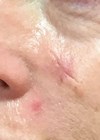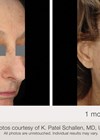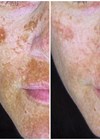The Frax Pro™ is a dual wavelength platform of non-ablative fractional laser technology encompassing the wavelengths 1550 and 1940nm, both in the mid infrared region. This produces tissue coagulation through microscopic zones which ultimately leads to a specific biological response [1].
In the case of 1550nm, this manifests with coagulative zones in the dermis; the depth depending on the fluence. While the 1550nm can be combined with cosmeceuticals, it is primarily the new wavelength 1940nm that lends itself well to the combination treatment.
The new Frax 1940nm handpiece
The Frax 1940™ relies on a solid state diode emitting a 1940nm wavelength in a scanning mode with in-built cooling (Softcool™). This wavelength is unique since it lies very close to the peak of the water absorption wavelength in the non-ablative range close to the ablative threshold. This results in an avid light-tissue interaction with water with a superficially-located biological interaction manifesting as coagulation and epidermal and superficial papillary dermal injury. Microscopic epidermal necrotic debris (also known as MENDs) leads to epidermal renewal, pigment clearance and together with the superficial nature of the injury leads to clinically visible improvements in tone and texture. There are currently very few available technologies aside from ablative lasers that have such a marked impact on the epidermis, giving clinical results described by patients as: “glowing skin”, “smoother skin”, and a “porcelain feel” of the treated skin.
Histology from 1940nm treatments and a comparable wavelength 1927nm show microscopic dilated openings and splits in the epidermis that allow for enhanced molecule delivery such as cosmeceuticals. This can be used as an advantage to combine desired cosmeceuticals for a particular skin issue immediately after treatment with 1940nm for synergistic effect [2].
Case reports
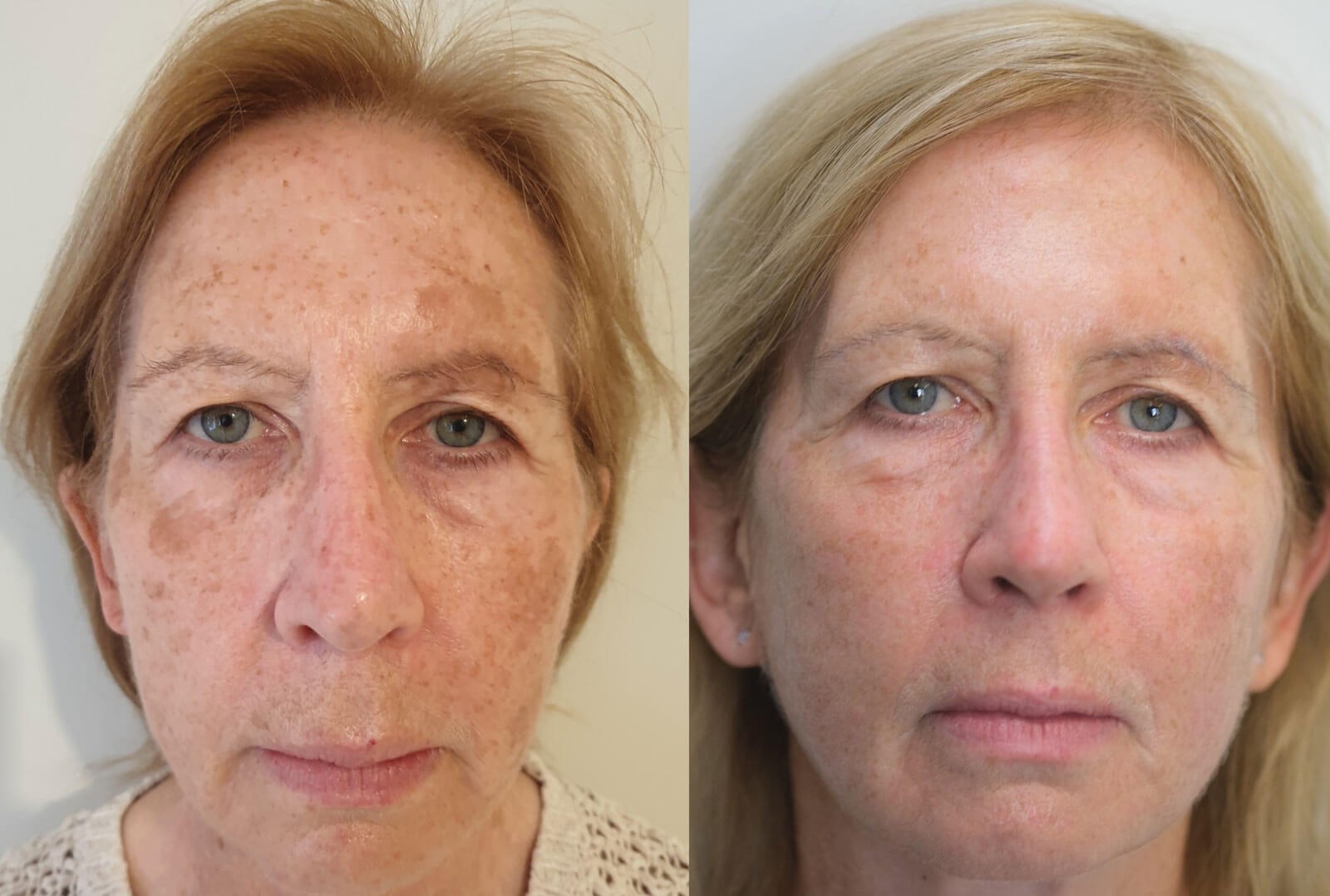
Figures 1a & 1b: Photodamage treated with Frax 1940, and topical vitamin C and hyaluronic acid.
Case 1
A 56-year-old woman (Figure 1) with evidence of photodamage and dull, rough facial skin was treated with the Frax 1940 handpiece using the following parameters: Energy of 10mJ, density of 35%, scanner width of 10mm, four passes over the entire face with two additional passes on the large individual lentigos using a 4mm scanner width, 50% density and 7mJ fluence. The clinical endpoint is erythema, and immediately post treatment the cosmeceutical was added which consisted of non-cross-linked hyaluronic acid mixed with vitamin C serum 20% (mesohyal hyaluronic acid and mesohyal vitamin C, mesoestetic®, Spain). This is non-irritating and is both hydrating and has rich antioxidants effects. Post-care consisted of a light-based moisturiser regularly with strict sun protection. The downtime is around four to five days with erythema and darkening of the lentigos, and a total of two treatments were performed with significant improvement in pigment reduction, smoothening of the skin and the “glow” described by the patient that continued for weeks post treatment.
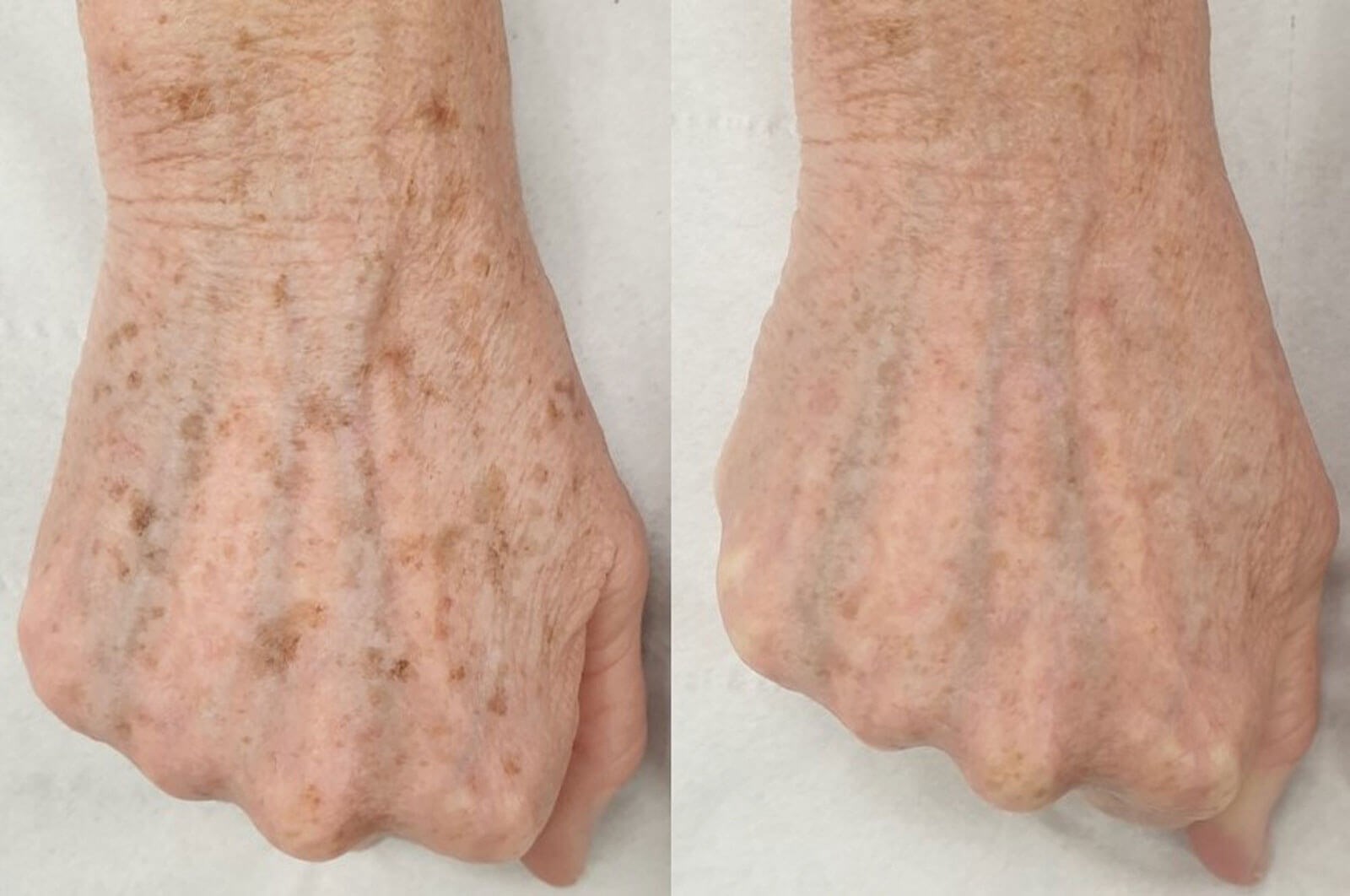
Figure 2: Photodamage with lentigos on the back of the hand treated with the combination
of Frax 1940 and topical lightening serums and creams that improve skin quality too.
Case 2
A 53-year-old woman with photodamage and lentigos on the back of the hand had treatment with the combination of Frax 1940 and cosmeceuticals. Treatment was performed with low fluence Frax 1940nm with 5mJ, 25%, 4mm, three passes on individual lentigos and then 10mm, 5mJ, 20%, two passes on the entire hand followed by application of topical mixture of tranexamic acid, vitamin C, N-acetyl glucosamine and idebenone (C.prof 210 depigmentation solution, mesoestetic®, Spain). Further home treatment was with Eucerin® hyalyron-filler and elasticity hand cream which contains a lightening ingredient called Thiamidol® (Eucern, Beiersdorf, Germany) and sun protection.
References
1. Geronemus RG. Fractional photothermolysis: current and future applications. Lasers Surg Med 2006;38:169-76.
2. Geronemus R, Du A, Yatskayer M, et al. Enhanced efficacy of a topical antioxidants regimen in conjunction with a home-use non-ablative fractional diode laser in photodamaged facial skin. J Cosmet Laser Ther 2016;18(3):154-61.
Declaration of competing interests: The author has previously received speaker fees from Candela.
COMMENTS ARE WELCOME




